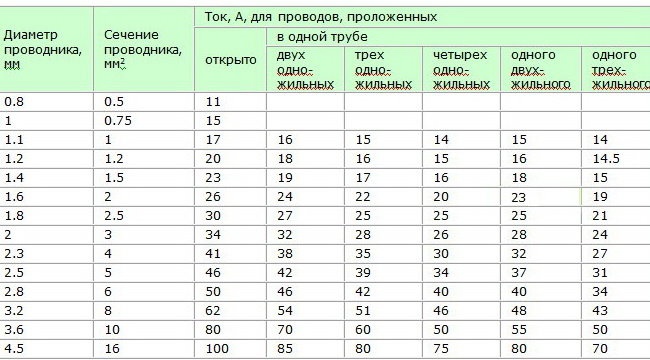Instruction
1
To use any available measuring devices. the ideal option is to use a micrometer; it is possible to replace it with a caliper. In an extreme case, fit a tape measure or ruler with clearly visible divisions and a pencil (or a long thick nail). As is known, the area of a circle (a cross section of the wire is the circle) can be found by the formula S=?r2 or S=0.25?D2; r is the radius of the wire, D is its diameter. Directly the radius of the conductor is difficult to measure, and no reason is sufficient to determine the diameter. Since ?=3,14, one may assume that S=0,78D2, the accuracy obtained is quite reasonable.
2
Simply put, to know the cross-sectional area, measure with a micrometer (or caliper – it's more affordable) diameter core wire, the result is to multiply himself, that out – even multiply by 0.78. When determining wire size large diameter (2.5 mm) to simplify calculations it is possible to use a factor of 0.8. When measuring wires with a diameter of 0.5 mm or less, it is possible to apply a factor of 0.7.
3
In the absence of such precision measuring instruments like Vernier caliper or micrometer, you can determine the diameter using a ruler. For this you need to reel in the object like a pencil, for ease of calculations - multiple of ten, the number of turns of the examined wire; the coils will be greater, the better the end result. The winding should be dense, turn to turn. You should then measure with a ruler the length of the resulting winding length divided by the number of turns, the result will be the diameter of the core wire. Further, it is possible to calculate the cross section of the wire as described above.
4
To determine the cross section of stranded wire in two ways. In the presence of micrometer or caliper is measured in the cross section of one core, the result is multiplied by the number of cores. To measure the cross section stranded wire with a ruler, it is necessary to twist the pliers in the "pigtail" and then act as described above.
